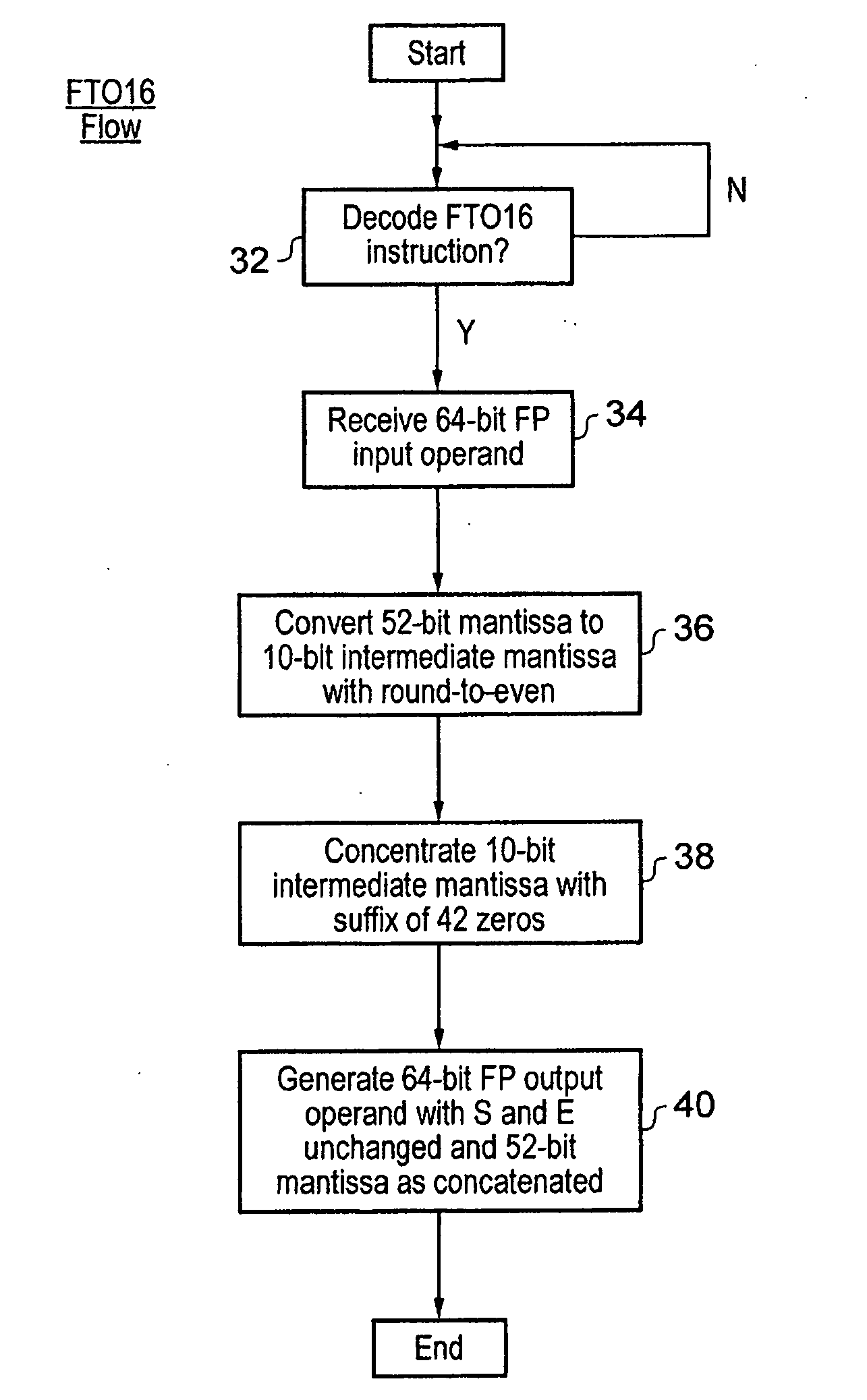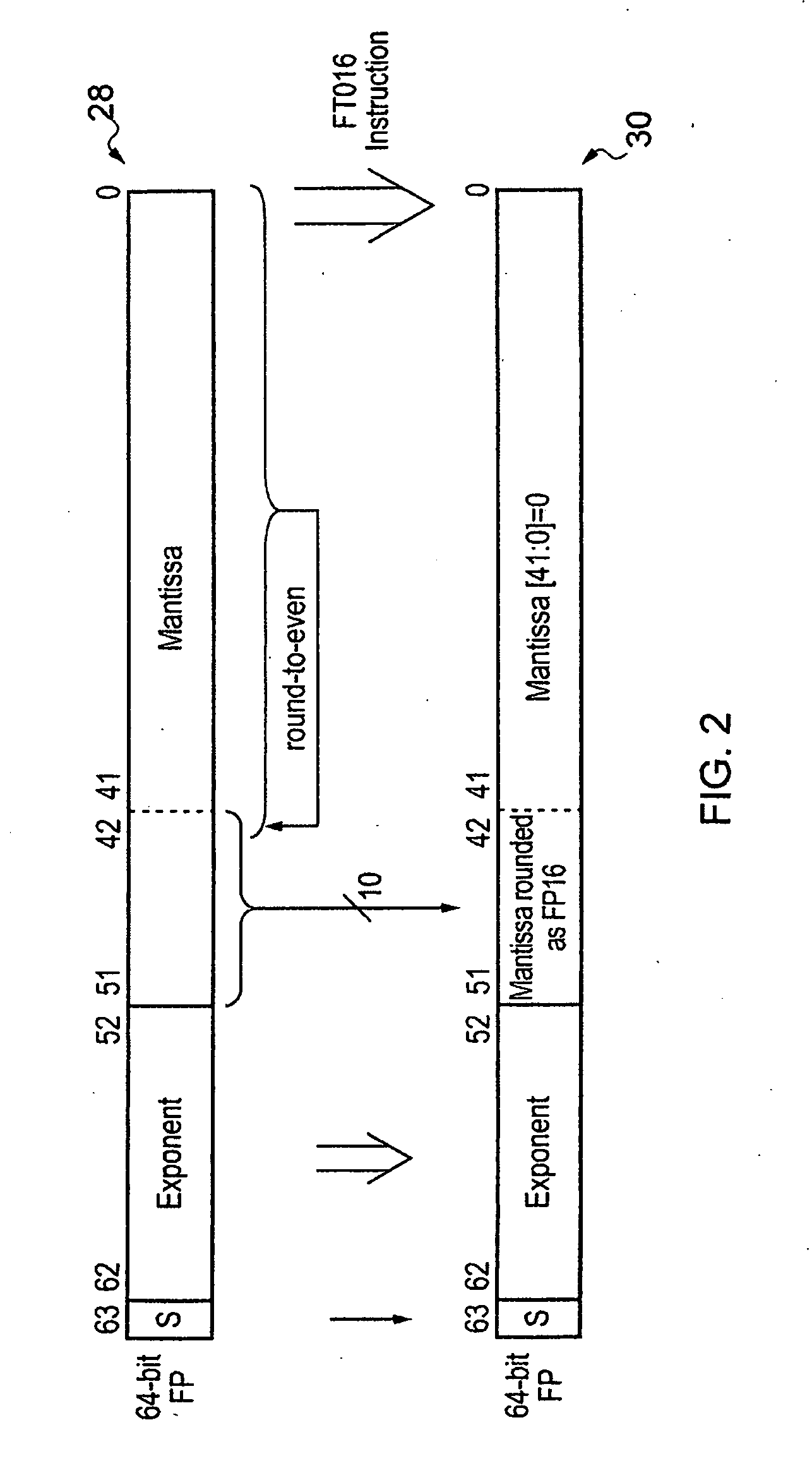Number format pre-conversion instructions
a technology of pre-conversion instructions and number format, applied in the field of data processing systems, can solve problems such as double rounding errors, and achieve the effect of simplifying processing and reducing the width of floating point operands
- Summary
- Abstract
- Description
- Claims
- Application Information
AI Technical Summary
Benefits of technology
Problems solved by technology
Method used
Image
Examples
Embodiment Construction
[0063]FIG. 1 schematically illustrates a data processing apparatus to comprising a processor core 4 coupled to a memory 6. The memory 6 stores floating point and integer data 8 for manipulation under control of program instructions 10. The processor core 4 fetches program instructions from memory 6 in to an instruction pipeline 12. The decoder circuitry 14 reads the program instructions from one stage of an instruction pipeline 14 and generates control signals for controlling processing operations to be performed by processing circuitry within the processor core. The processing circuitry may include a data path formed of integer registers 16, a multiplier 18, a shifter 20 and an adder 22. The processing circuitry may also include floating point registers 24 and floating point processing circuitry 26. The control signals generated by the decoder circuitry 14 in response to the program instructions are used to configure and control the processing circuitry 16, 18, 20, 22, 24, 26 to pe...
PUM
 Login to View More
Login to View More Abstract
Description
Claims
Application Information
 Login to View More
Login to View More - R&D
- Intellectual Property
- Life Sciences
- Materials
- Tech Scout
- Unparalleled Data Quality
- Higher Quality Content
- 60% Fewer Hallucinations
Browse by: Latest US Patents, China's latest patents, Technical Efficacy Thesaurus, Application Domain, Technology Topic, Popular Technical Reports.
© 2025 PatSnap. All rights reserved.Legal|Privacy policy|Modern Slavery Act Transparency Statement|Sitemap|About US| Contact US: help@patsnap.com



